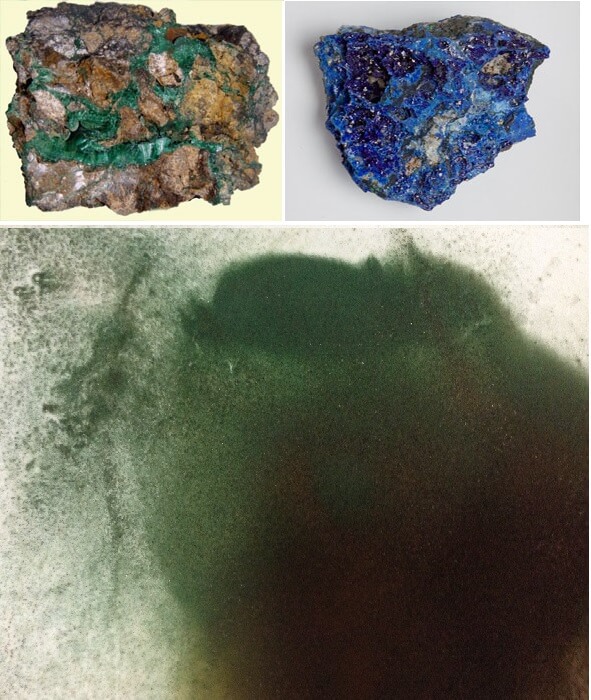- To participate in the 911Metallurgist Forums, be sure to JOIN & LOGIN
- Use Add New Topic to ask a New Question/Discussion about Hydrometallurgy.
- OR Select a Topic that Interests you.
- Use Add Reply = to Reply/Participate in a Topic/Discussion (most frequent).
Using Add Reply allows you to Attach Images or PDF files and provide a more complete input. - Use Add Comment = to comment on someone else’s Reply in an already active Topic/Discussion.
Leaching Medium-High Grade Copper/Silver Ore (4 replies and 2 comments)
Hi Steven,
you'll need to acid leach the oxide copper 1st. Then you neutralize and cyanide leach the silver. I think a better option is it hydroxamate float the Cu oxide and Ag together and sell that to the smelter.
If the smelter does not want it, you can acid leach the flotation concentrate, neutralize, and NaCN leach the silver. Much smaller mass/cost. You can precipitate the leach copper into copper cement using sponge iron similar to what LPF plants do.
Look at https://www.911metallurgist.com/blog/flotation-by-hydroxamate-oxflos-ctc3-vs-axishouses-am2-rinkalore
OXFLO just loves chrysocolla and silver. There are others by Cytec/Axishouse as well.
https://www.911metallurgist.com/blog/chrysocolla-flotation

Thanks, John.
This is really good info!
And yes, we were already planning on cementing out the copper from a pregnant leach solution if we went that route.
I hadn't thought about trying to float the oxides. In the last concentrator (lowly sample tech) they pounded into my head: you can only float sulfides.
Again, thanks for the info
Steven,
sometimes you can sulfidize the copper oxides with NaSH and float it with PAX and Dow Froth. A hydroxamate is almost a sure thing but sometimes you get chrysocolla and malachite that will respond to Sodium hydrosulfide. Do you have a float cell to test this on?
I trying to get access to the flotation lab at a nearby mill that's shut down.
But in the meantime: no I don't.
I wouldn't mind trying to build/jury rig a float cell though.
Hi Steve
At current metal prices the 100 tons has about $15,000 worth of silver and about $20,000 worth of copper.
The cost of setting up the plant makes it uneconomic.
Regards
Grant
The specific gravities of chrysocolla and malachite are ~2 and 4, respectively. Cuprite (Cu2 O), which at a gravity of 6.1 is getting close to acanthite (a common silver ore) @ ~7.2. Native silver has a specific gravity of anywhere from 9.6 - 12, depending on alloying metals. Based on these numbers, I would think you could separate the green copper ores from acanthite or silver by gravity methods. However, cuprite may present a problem if it's present in significant concentrations. (There are other silver minerals I haven't looked up, but I expect they will be heavy, too). So if the copper oxide you mention is indeed cuprite and your silver is acanthite, you will have problems silver from copper minerals using gravity. It all depends on the details, as usual. Discerning the constitution of your ore would be a good step, in my opinion, since the gravity method looks like a cheap and easy solution. Or you could cut to the chase and grind samples and run them through a small-scale apparatus (even a pan or sluice) to see if the gravity method is feasible. Be sure you don't grind the ore too small lest some of it float away in the wash. I know there's an old paper out there by a prospecting geologist concerning prospecting for all sorts of heavy minerals using a pan. I haven't read it, but it sounds like it might be valuable to anyone in your position.
Please join and login to participate and leave a comment.

Hi All,
Do you have any thoughts on leaching an ore that runs high in both copper oxides and silver?
We have about 100 tons of old mine stockpiles on our claim that assayed 4.0% copper and 8 ounces/ton silver. The copper minerals are almost all chrysocolla with a little malachite.
From what I understand, this WAY too much copper for a normal cyanide leaching of the silver. Some solutions we're kicking around:
I know 100 tons sounds like small potatoes, but assume we don't have to worry about the capital costs of setting up a processing plant, so my main concerns are simplicity and operating costs.
Thanks for your help,
Steven